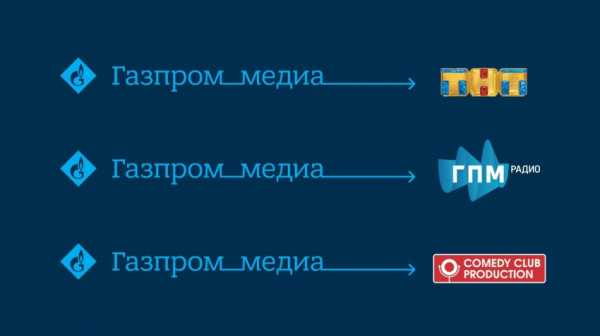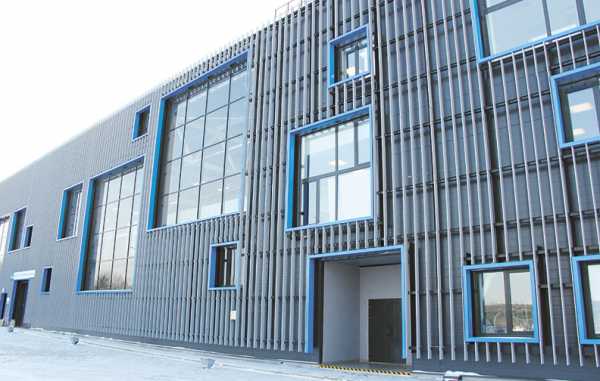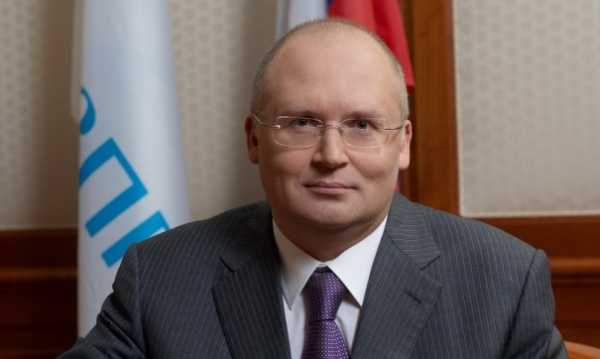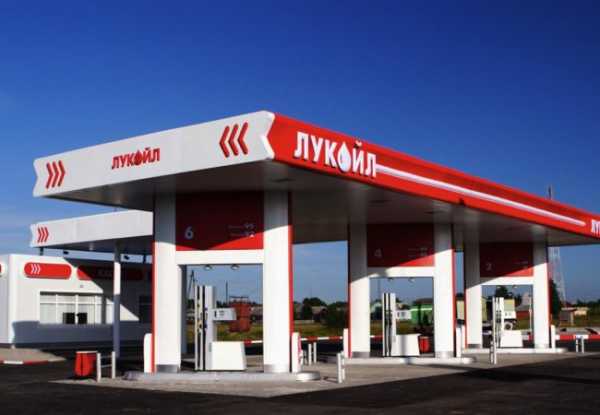Газпром. Партнеры компании газпром
Западные партнеры «Газпрома» призвали к сотрудничеству с Москвой :: Бизнес :: РБК
На фоне политических разногласий между Западом и Москвой партнеры «Газпрома» — австрийская OMV и англо-голландская Shell — призвали к взаимовыгодному сотрудничеству в газовой сфере. Но ЕС пока не выдал разрешения на строительство «Северного потока-2»
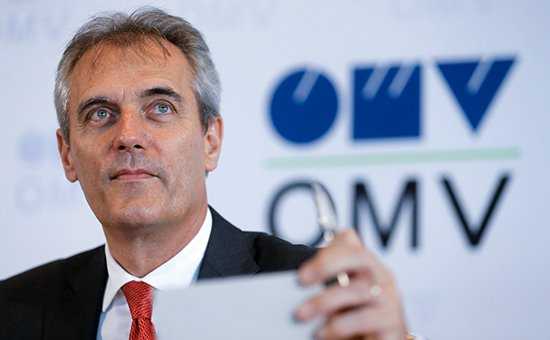
Председатель правления OMV Райнер Зеле (Фото: Reuters/Pixstream)
«Партнерство между Европой и Россией представляет собой симбиоз, а не зависимость, что важно для развития нашей экономики», — заявил председатель правления OMV Райнер Зеле, один из главных сторонников «Газпрома» в Европе, выступая на Петербургском международном газовом форуме. «Я пытаюсь убеждать политиков, чтобы они позволили вести надежные поставки газа [из России] в Европу», — заявил он.
OMV — партнер «Газпрома» по строительству газопровода «Северный поток-2» через Балтийское море и по другим проектам.
По словам Зеле, Евросоюз пока не в состоянии действовать как нечто целое, поэтому трудно находить единое решение. «К сожалению, природный газ участвует в политических дискуссиях не всегда в нужном аспекте. Европа должна не забывать о диверсификации поставок газа для их надежности», — сказал он, напомнив о западных санкциях, которые были введены в отношении российских компаний после присоединения Крыма в марте 2014 года, и о сложностях с согласованием строительства новых газопроводов «Газпрома» в Европу. По оценке главы OMV, собственное производство газа в Европе будет снижаться ежегодно на 50 млрд куб. м и этот разрыв «надо чем-то заполнить», поэтому Россия остается «важным партнером».
«Нужно укреплять связи между нашими странами, себестоимость производства газа в России ниже, чем в Европе, мы хорошо дополняем друг друга», — продолжил Зеле. Он напомнил, что у OMV есть опыт сотрудничества с российскими компаниями и она надеется расширить это партнерство.
О влиянии «политических аспектов» на переговоры по газу обратил внимание и главный исполнительный директор англо-голландской компании Royal Dutch Shell Бен ван Берден, который также прибыл на форум в Петербурге. «Чтобы быть успешными [нефтегазовыми компаниями на рынке], нужно выиграть это соревнование, несмотря на все политические проблемы», — сказал он. Ван Берден пообещал, что Shell, являющаяся совладельцем СПГ-завода «Сахалин-2» (контроль — у «Газпрома»), будет и дальше развивать энергопроекты на Дальнем Востоке в России.
Иностранные компании, которые представлены в России, сталкиваются с регуляторными вопросами, их задача — доводить свою позицию до политических кругов своих стран и экономических союзов, указал предправления «Газпрома» Алексей Миллер. Речь идет о преференциях для крупных проектов со стороны правительства, в том числе про российские СПГ-проекты, например Балтийский СПГ, которые собирается строить «Газпром», уточнил он. «Мы предоставляем возможность прямого общения с российскими властями, руководители нефтегазовых компаний имеют возможность донести свою позицию до политического руководства России», — отметил он.
Миллер сообщил, что в ближайшее время делегация российской монополии отправится с визитом в Вену на переговоры с руководством Австрии. «Наше сотрудничество на уровне корпораций носит взаимовыгодный характер», — подчеркнул он: «Газпром» внимательно прислушивается к позиции партнеров, находит баланс интересов и реализует совместные проекты. «Пример тому — более чем [за] 40 лет успешная работа на газовом рынке Европы», — указал глава «Газпрома», добавив, что у него проходят «регулярные переговоры» и с китайскими партнерами.
По прогнозу главы «Газпрома», в ближайшие 25 лет среднегодовые темпы роста потребления газа будут в 3,5 раза выше, чем жидких углеводородов и угля. «Глобализация газового рынка началась, но газу как глобальному энергетическому продукту предстоит сделать большой шаг вперед [...], и партнеры «Газпрома» внесут свой вклад в глобализацию газового рынка», — сказал он.
Для создания глобального газового рынка потребуется создавать новую газотранспортную инфраструктуру, заявил Миллер. «Всем известны наши проекты на севере и на юге, — сказал он, имея в виду строительство «Северного потока-2» и «Турецкого потока». — Потребители газа должны приветствовать, что компании-производители и, в частности, «Газпром» инвестируют средства в доставку природного газа потребителю». Впрочем, строительство нитки «Турецкого потока» до границы с Европой может произойти лишь после получения гарантий от Еврокомиссии, говорил в августе министр энергетики Александр Новак. «Газпром» также пока не получил разрешения европейских властей на прокладку северного газопровода.
www.rbc.ru
Газпром
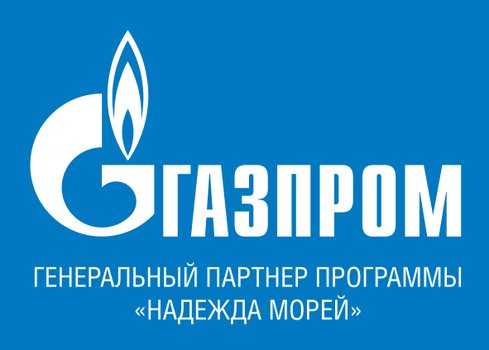 Сайт партнера: http://www.gazprom.ru/
Сайт партнера: http://www.gazprom.ru/ ПАО «Газпром» — глобальная энергетическая компания. Основные направления деятельности — геологоразведка, добыча, транспортировка, хранение, переработка и реализация газа, газового конденсата и нефти, реализация газа в качестве моторного топлива, а также производство и сбыт тепло- и электроэнергии.
«Газпром» видит свою миссию в надежном, эффективном и сбалансированном обеспечении потребителей природным газом, другими видами энергоресурсов и продуктами их переработки.
«Газпром» располагает самыми богатыми в мире запасами природного газа. Его доля в мировых запасах газа составляет 17%, в российских — 72%. На «Газпром» приходится 13% мировой и 73% российской добычи газа. В настоящее время компания активно реализует масштабные проекты по освоению газовых ресурсов полуострова Ямал, арктического шельфа, Восточной Сибири и Дальнего Востока, а также ряд проектов по разведке и добыче углеводородов за рубежом.
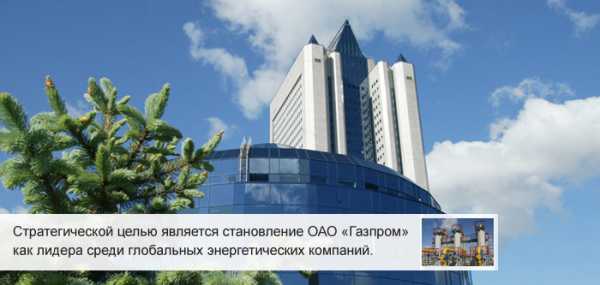
«Газпром» — надежный поставщик газа российским и зарубежным потребителям. Компании принадлежит крупнейшая в мире газотранспортная сеть — Единая система газоснабжения России, протяженность которой превышает 168 тыс. км. На внутреннем рынке «Газпром» реализует свыше половины продаваемого газа. Кроме того, компания поставляет газ в более чем 30 стран ближнего и дальнего зарубежья.
«Газпром» является единственным в России производителем и экспортером сжиженного природного газа.
Существенные факты, информация об услугах по транспортировке и перечень инсайдерской информации
Компания входит в пятерку крупнейших производителей нефти в РФ, а также является крупнейшим владельцем генерирующих активов на ее территории. Их суммарная установленная мощность составляет 17% от общей установленной мощности российской энергосистемы.
Стратегической целью является становление ПАО «Газпром» как лидера среди глобальных энергетических компаний посредством диверсификации рынков сбыта, обеспечения надежности поставок, роста эффективности деятельности, использования научно-технического потенциала.
foundation-of-historic-boats.ru
Преимущества работы в нашей компании
EXPANDING BOUNDARIES
Interview with Andrey Fick, Managing Director and CEO of Gazprom International
– Mr. Fick, this year Gazprom International is celebrating its 20th anniversary. Could you talk about how the company was established and developed?
– The appearance of our company was logical considering expanding international interests of the Gazprom Group.
Foreign projects operator
– In September 1998 in order to win back their economic stands in traditionally meaningful regions for Russia, such as Vietnam, for example, three national companies Zarubezhneftegaz, Stroytransgaz and Gazprom started a joint venture for international projects implementation– ZAO Zarubezhneftegaz. Later Gazprom decided to buy its partners’ shares and become a sole owner of Zarubezhneftegaz. And in 2007 that company was renamed into ZAO Gazprom zarubechneftegaz, which became the sole operator of Gazprom Group upstream projects in Vietnam, Uzbekistan, Kirgizia, Tadzhikistan, India and Venezuela.
At the same time in order to strengthen collaboration with key international partners of Gazprom, such as, for example, a French Total and a German Wintershall, alongside with developing an asset exchange platform, in 2007 Gazprom Netherlands B.V. was created. In 2009, it became Gazprom EP International B.V. That company represented interests of the Gazprom Group in Algeria, Libya, Nigeria, Namibia, Bolivia and a number of other countries.
In 2011, Gazprom decided to merge Gazprom Zarubezhneftegaz and Gazprom EP International B.V to make management of its foreign projects more efficient.
Today, Gazprom International is a dynamically growing company, its portfolio includes 10 ongoing foreign projects for hydrocarbon exploration and production. If add other projects we have participated in, the total number will be over 40. Thereby we are present in three continents and 17 сcountries. And we are planning to extend the boundaries of our presence - currently we are studying and reviewing a vast number of promising oil and gas projects that may be interesting for us.
The most valuable asset
– Above all, I must say the Gazprom International team played a decisive role in the company’s buildup and evolvement. It’s the people that, without doubt, remain out most valuable asset. For two decades in business, we’ve managed to put together a large multinational team that unites talented and dedicated professionals. This makes us unique. Those who work in Gazprom International were there when Gazprom Group entered the international energy market: foreign service officers, prominent scientists and world-class experts.
So, for example, Andrey Kovtun, a former Ambassador Extraordinary and Plenipotentiary of Russia in Vietnam, heads the Gazprom International Representative office in Ho Chi Minh City. He was hands-on involved in inking the most significant agreements that paved the way for interaction in oil and gas sector for two countries.
Vladimir Vovk, an Honored Employee of oil and gas industry of the Russian Federation, Veteran of Labour, worked in the company for a long time. It is impossible to list all of his merits for the country and the industry. He was among the first specialists of the Gas Ministry to go to Vietnam to explore and produce gas on the shelf of the East (South-China) Sea. He was the Head of Vietsovpetro, a Russia-Vietnam joint venture. And made an immense contribution into the start and development of joint oil and gas projects we share with Petrovietnam.
Dr. Roman Kuznetsov, the company’s Technical Director, formerly headed the VolgoUralNIPIgaz – an institution that occupies leading positions in the field of design and scientific research in oil and gas industry in Russia and near-abroad countries. He was directly involved in the turn-key implementation of a cluster of projects in the fuel and energy sector. For example, for our company it was designer’s supervision of the construction of the deepest well in the Central Asia – Shakhrinav-1P in Tadzhikistan. Currently he continues to make headway with research and development projects of Gazprom International.
Such environment creates favorable conditions for training and professional growth of our younger talents.
Strategy
– What does the Gazprom International development strategy imply?
– Since the time when Gazprom International came to existence the company’s strategy hasn’t changed in its essence. Our activity is aimed at the development of mutually beneficial partnership, first of all, in the segment of exploration and production with the key international partners of the Gazprom Group, national oil and gas companies of other countries, that have good-hearted relations with Russia and with transnational energy corporations and large private organizations that act in the global and regional markets respectively. The main objective of Gazprom International is to aid Gazprom PJSC in strengthening its position in the world market as a global energy corporation present in all key oil and gas producing regions. The key indicators for our projects have always been long-term mutually beneficial partnership and economic efficiency.
– What aspects of Gazprom International activity do you define as key aspects? Which countries are of the most interest to the company? Which projects stand out?
– The core of our activity remains with the projects on exploration and development of natural gas and liquid hydrocarbons, well construction and servicing, creating infrastructure and other oil and gas related facilities. From performance indicators standpoint, the main regions for us are Vietnam and Bolivia. The projects that Gazprom International takes part in make 18% and 14% respectively of the overall gas production in these countries. Meanwhile every project we participate in is unique, hence is as valuable as any other.
– What were the work results of Gazprom International in 2017? What has this year brought to the company?
– The past year was quite prolific: we reached stable production level in Bolivia and on the shelf of Vietnam, initiated significant changes in the work of the joint venture on the North Sea shelf. This all allowed the company to end the year in profit, considering a rather difficult time period of volatile prices on hydrocarbons. This year we are making progress in optimization of our activity in the regions of presence, we have signed extension of the Production Sharing Agreement (PSA) on additional development of the Shakhpakhkty gas field in Uzbekistan, finished drilling production wells in Bangladesh.
Vietnam
– Gazprom International carries out production of hydrocarbons in Vietnam at Blocks 05-2 and 05-3, the operator being Petroleum Operating Company Bien Dong, a joint venture with Petrovietnam. In 2017, according to the plan of joint development of the Hai Thach and Moc Tinh fields, located within Blocks 05-2 and 05-3, investment period was completed: 16 production wells were drilled, three platforms and other infrastructure elements were constructed. The project entered the development phase. Annual production of natural gas at the abovementioned Blocks was 2 billion cubic meters per year in 2016-2017. Cumulative production for this project was around 9 billion cubic meters of gas and over 2 million tons of gas condensate – the Gazprom Group share was over 3 billion cubic meters of gas and about 0.5 million tons of condensate. Currently daily production there reaches 7 million cubic meters of gas and 1.1 thousand tons (9 thousand barrels) of condensate. The gas production plan for this year is 2 billion cubic meters, condensate – 356.7 thousand tons (2.7 mln barrels). As I’ve mentioned before, to this date this is one of the largest gas production projects in the Socialist Republic of Vietnam.
However, we hope to put other fields into production. In the course of large scale exploration in Vietnam, Vietgazprom, another joint operating company of Gazprom International and Petrovietnam, National State Owned Corporation, discovered the Bao Vang and Bao Den gas-condensate fields, and also the Than Bien, a deep-water hydrocarbon gas field, in 2007-2016.
In 2017, in order to identify the commercial value of the Bao Vang field Vietgazprom prepared a comprehensive report on field assessment and further development concept, calculation on the economic efficiency and substantiation of the best case scenario of development. The field was recognized as important and the reserves could be viewed as commercial under certain conditions. Blocks 11/04, 112, 113 have the potential of resource base increase, however in the current economy the focus of attention is on obtaining guarantees for the creation of a solvent market outlet for hydrocarbons in Central Vietnam. Continued exploration and start of production of the discovered reserves of the gas bearing prospects of the A1 structure and the Bao Vang field is feasible for the Gazprom Group only if the decision on the construction of the Quang Tri Province Power Plant is made, so the gas from the field will go there, and agreements are reached with the Vietnamese side on the terms and conditions of the electric energy marketing and tax preferences for the Bao Vang project are provided. Our efforts are now focused on the resolution of these issues.
In addition in 2013 Gazprom and Petrovietnam signed an Agreement establishing a joint venture for production and use of liquefied natural gas (LNG) as motor fuel in Vietnam. At the same time Gazprom International began the implementation of that project. In 2015 a Russia-Vietnam JV PVGAZPROM NGV LLC was founded. It included Gazprom International – with 35,5% share, OOO Gazprom Gazomotornoye Toplivo – 35,5%, and PV Gas, a subdivision of Petrovietnam Gas Corporation – 29%.
To this day, the JV has carried out marketing research on identification of potential demand on NGV (natural gas for vehicle fuel) in the segments of road and water transport in Ho Chi Minh, country’s largest megapolis, and other eight neighboring provinces of the key economic region of Southern Vietnam. The JV pilot project should include construction and operation of a small-tonnage plant for production of 14 thousand tons of LNG per year, creation of a transportation and logistics facility and installation of a network of mobile cryogenic gas filling stations.
The project is aimed at improvement of the ecology in the region by means of using clean and cheap fuel, its implementation meets the interests of Ho Chi Minh City, Ba Ria-Vung Tau province, that together with Petrovietnam supported the pilot project for production and monetization of NGV in Ho Chi Minh.
– How do see business prospects for Gazprom International in Vietnam?
– We count on keeping our firm position at the country’s gas market and on further mutually beneficial partnership. Within the present portfolio of the Gazprom Group in Vietnam there is a substantial potential for optimization and further growth. Moreover in May 2016 Gazprom International and Petrovietnam Exploration & Production signed a Memorandum of Understanding on further cooperation between companies to look for new projects for joint implementation. Alternative points of growth for Gazprom lie in the implementation of integrated projects. For example, construction of a power plant in the central Quang Tri province that will run on natural gas from the Bao Vang field.
The North Sea
– In the aquatorium of the North Sea Gazprom International participates in the implementation of projects, having its shares in a number of licenses for exploration and production, and a share in the JV with a German Concern Wintershall – Wintershall Noordzee B.V. (WINZ). The JV asset portfolio includes more than fifty licenses. JV operates in the Dutch, British, German and Danish sectors of the North Sea. In 2017, according to the license obligations, Winchelsea-2 exploration well (5528 m deep) was drilled in the British sector. The Sillimanite project is at stage of making a decision on its transfer to the phase of infrastructure construction and development. Last year in the Dutch sector drilling of North Andalusite (D12-07) prospecting well began, and resulted in a discovery in February 2018.
– How do you feel about your company’s business prospects in the North Sea shelf?
– It is a very complex region both from resource base standpoint and production costs. In the southern part of the North Sea shelf hydrocarbon fields are small and technologically challenging. The work is based on the assembly line principle: how soon discovered reserves are put into production defines the difference between profits and losses in a highly competitive environment, to maintain production there it is necessary to constantly invest into the prospecting of new resources and development of production technologies. At the same time considering low prices on fossil fuels investors have to pay particular attention to operational costs control. Especially since we as the WINZ shareholders, set forth a task for the top management of the company to be among top 5 North Sea operators by operational costs per a production unit.
These tasks are fixed in the updated WINZ strategy. All projects in the JV portfolio are ranked annually to identify the main projects that bring or may bring profit in the near-term outlook, alongside with optional projects the implementation of which depends on the markets and the availability of free cash.
One of the main projects in the WINZ portfolio is the development of the Wingate gas field in the British sector of the North Sea. It was put into production in 2011. The objective for the near future is to continue production and gas supply to consumers.
By the way, the Greater Wingate cluster includes a number of fields that are located in the close proximity to the main hydrocarbon accumulation area.
So far, two wells have been drilled at the Winchelsea field. Based on the obtained geological data, currently, in-place reserves are being re-estimated and the geometry of the structure is being constrained. The data and economic indicators of the project will determine the decision regarding our further steps.
The Sillimanite field has been prepared for infrastructure construction phase followed by production phase. Project options and legal framework have been defined. It should be mentioned that the field is located within three blocks that have different stakeholders. In addition it is a transboundary field, its development requires conclusion of agreements with the authorized bodies of the United Kingdom and the Netherlands. Luckily, mutual understanding has been reached regarding this issue. In 2017 a production license was obtained, and field unitization agreement was signed, now we are undergoing the process of intergovernmental agreement ratification. We hope that in very near time we will be able to discuss the future of this project in more detail.
As for the WINZ plans directly, in 2019-2020 the JV expects to increase production of natural gas up to 1.1 billion cubic meters and of oil up to 85.6 thousand tons per year. For no doubt, production of hydrocarbons in the North Sea is relatively small, but our participation in these projects is not limited to volumes of production. It’s enough to say that the experience of joint implementation of the offshore projects will allow us to apply the received knowledge and skills, as well as technological, technical and managerial solutions for all phases of hydrocarbon field development cycle (from exploration for a potential target to supplying gas to customers) in other regions of our presence. Hence raising the efficiency of managing our own asset portfolio.
Bolivia
– Putting in production the Incahuasi gas-condensate field in Southern Bolivia in 2016 was a significant milestone for us. Initially, the daily gas production rate amounted to 6.5 million cubic meters. Today about 8 million cubic meters are produced daily, which constitutes 14% of total gas produced in Bolivia. Since the beginning of the production, more than 4.5 billion cubic meters of gas and almost 500 thousand tons of condensate have been recovered. Natural gas is mostly designated for export to Argentina via the gas transmission system. Condensate is being sold in the domestic market of Bolivia.
In accordance with the contract requirements, reprocessing of geophysical data, 3D magnetotelluric survey and gravimetric survey have been performed in the Azero license area. An environmental license for a well site in the Incahuasi Norte structure has been obtained and preparation of documentation for well construction has been started.
In 2017, Gazprom International and the Bolivian petroleum corporation Yacimientos Petrolíferos Fiscales Bolivianos (YPFB) signed a Memorandum of Intent regarding transition to commercial negotiations on La Ceiba and Vitiacua Blocks located in Southern Bolivia as well. And just in June this year, Gazprom International and Bolivian YPFB signed Heads of Agreement for Petroleum Services Contract for exploration and production in the Vitiacua area. The document will allow to proceed to the stage of generation of the main contractual framework of the exploration project in accordance with the complicated legislation in Bolivia.
– What has been already completed during the Incahuasi field development, what are the future plans of its development?
– In the course of the first phase of the Incahuasi-Aquio field development, Incahuasi-Х1 and Aquio-Х1001 prospecting wells were transferred to the operating well stock, Incahuasi-2 production well was drilled. Construction of the transportation facilities, central processing facility (CPF) and infrastructure for three wells were completed in August 2016. The production plateau was achieved in November the same year. Moreover, the CPF capacity exceeded the expectations (6.5 million cubic meters of gas per day according to the plan) and reached the level of 8 million cubic meters per day.
As the next step, a decision has been made on early connection of Incahuasi-3 well (initially it was planned for the second phase) and expansion of the existing process train capacity of the CPF up to 11 million cubic meters per day. At the same time, it has been decided to drill Incahuasi-5 for further exploration purposes, based on its results the field development strategy and potential of the second-phase commissioning may be possibly reviewed.
– What are the plans for the Azero Block?
– In accordance with the provisions of the Services Contract for the Azero Block, the minimum exploration program included a magnetotelluric surveys and drilling of two wells within separate prospective structures, Ñancahuazu and Ilinchupa. However, the existing environmental legislation of Bolivia does not allow for development of the Ilinchupa structure that is located in the Iñao National Park. In this regard, it was decided to announce partial force-majeure and to reject the respective part of the area. In regard to the Ñancahuazu structure, the general construction works for preparation of the drilling site and access roads are being performed in accordance with the approved schedule. Mobilization of the drilling rig is planned for December 2018.
In case of discovery and subsequent confirmation of its commerciality, connection of wells to the CPF of the neighboring Ipati area is considered as the main scenario for the Ñancahuazu structure development. This will allow to optimize the development costs and to increase the share of gas production with participation of the Gazprom Group up to 25-30% of the total production of natural gas in the country.
– Is it planned to expand activities of Gazprom International in Bolivia?
– And not only in Bolivia. Together with our Bolivian partners, we actively work on development of cooperation in the whole Southern Cone region. In particular, the sides confirmed their interest in establishment of a joint venture for selling of natural gas to Brazil and other countries of the Southern Cone with participation of YPFB and the Gazprom Group.
The implementation plan of the Memorandum of Understanding between YPFB and Gazprom Gazomotornoye Toplivo on establishment of a JV for projects of development of the production and selling infrastructure of CNG and LNG for marketing as a motor fuel and for needs of independent gasification is approved and initialed. Completion of this plan by the end of the current year will allow to coordinate joint actions and proceed to inking an agreement for establishment of the respective JV.
Bangladesh
In spring 2017, we concluded another contract for drilling of two new wells in Bangladesh – Bhola North-1 and Shahbazpur East-1. In November last year, a commercial gas inflow of 850 thousand cubic meters per day was recorded at Shahbazpur East-1 well, and in February this year, Bhola North-1 well was completed with production rate above 900 thousand cubic meters per day. Thus, in the current year, we have completed the third stage of the gas wells construction in this country. For the record we have been operating in Bangladesh since 2012, we have designed and constructed 17 exploration and production wells at eight fields.
– Do you intend to continue implementing similar services contracts in Bangladesh?
– For us, the implementation of such contracts means recognition of our competency, experience and capabilities in exploration. For Bangladesh is a rapidly growing country. Apart from this, such contracts give us an opportunity to gain significant experience in the region without additional investment risks for Gazprom PJSC. Now we can say that we are ready for further development of relations with the state bodies of Bangladesh in exploration and development of hydrocarbon fields. For example, the promising gas area Bhola, where we have completed a well this year, and its adjacent areas in the south contain enormous unexplored potential. The aim of the government of Bangladesh is to stimulate exploration in this region, and we are ready to perform all necessary works and we have potential for this. In case of interest and compliance with the corporate requirements of Gazprom PJSC, we are ready to consider an option of equity participation in such project as a co-investor and operator.
Central Asia
– If we look at the results of the past years, last year witnessed signing of several new agreements with Uzbekistan, including an agreement on joint exploration and establishment of an engineering and innovations center. Under these agreements, we are conducting a number of activities for pre-investment study of the promising oil and gas blocks proposed by Uzbekistan.
Apart from this, we continue implementation of the additional exploration project of the Shakhpakhty field in the north-west of Uzbekistan. The total cumulative gas production has exceeded 4 billion cubic meters since 2004. In May this year Gazprom and Uzbekneftegaz signed an addendum to the PSA on the Shakhpakhty field. The document provided for extension of the field development up to 2024 under the same commercial terms using the previously created processing base.
In the short term, we expect to start works on development of the Dzhel field we discovered under the PSA terms, for this purpose we need to use every effort to negotiate terms of the Product Sharing Agreement that are acceptable for all participants.
– Is any expansion of cooperation with Uzbekistan expected apart from this?
– In June 2017, Gazprom and Uzbekneftegaz signed the Strategic Cooperation Agreement that should serve as a base for development of the long-term mutually beneficial relations for a number of aspects, including study of the joint project implementation potential in exploration and production, underground gas storage, reconstruction, modernization and construction of the pipeline system of Uzbekistan, scientific and technological cooperation, training, competence development, etc. The Joint Coordination Committee and working groups by activity aspect have been established.
– And what is the status of the projects of Gazprom International in Tajikistan and Kyrgyzstan?
– Since 2008, a tremendous amount of work has been completed. Four license areas have been studied, seismic and gravity surveys have been completed, the deepest well in the Central Asian region, Shakhrinav-1P, has been drilled. All this had its purpose. Although considering the current level of the world technologies development, we have not yet had a commercial hydrocarbon inflow, at the proper time we will be ready to work there. We have received reliable exclusive data on petroleum potential of the region and for the first time we confirmed presence of oil and gas in the deep deposits.
Meanwhile we consider a number of other projects on prospecting, exploration and development of the hydrocarbon deposits in Tajikistan under earlier commitments. In particular, we study the potential of development of the fields in the south-west and north of the country. They all were discovered in the Soviet time and are allocated to the old stock. In case of positive decision on participation in these projects, the tasks of Gazprom International will include preparation of the feasibility study, performance of a set of exploration and field studies, re-interpretation of historic data, assessment of the resource potential, workover of wells, additional exploration and development of the deposits.
In regard to Kyrgyzstan, we continue studying the outlook of hydrocarbon fields development in the country, reconstruction, construction and operation of the main gas pipelines and other facilities of gas grid of the country, and gas transportation and supply when implementing joint projects.
Africa
– What about your African projects – in Algeria, Nigeria and Libya?
– The El Assel project in Algeria, where Gazprom International acts as the operator, remains without doubt among the projects of the highest priority for us. However, as it was mentioned earlier, our activities are based on the principles of economic efficiency and commercial viability. The project should provide the required level of return on investments for the Gazprom Group. The exploration stage at the El Assel contract area was completed in June 2016. And now we elaborate all technical and economic aspects of the project in order to achieve profitability and compliance with the Gazprom standards. In case of successful negotiations, a decision on transition to the development stage and launch of the hydrocarbons production at all fields that we have discovered (the Zemlet Er Rekkeb (ZER) and Zemlet Er Rekkeb Nord (ZERN) oil fields, and the Rhourde Sayah (RSH) and Rhourde Sayah Nord (RSHN) gas-condensate fields) should be made.
The decision regarding the following steps for the ZER and ZERN fields project should be made by October this year when the extension period (for submission of the commerciality statement and development plan) approved by the Algerian National Hydrocarbon Development Agency ALNAFT of the Ministry of Energy of Algeria expires. In case an agreement on measures for enhancement of the project economic performance with the Algerian side is reached, we will propose to the state company Sonatrach to jointly perform additional appraisal drilling at ZER before making a decision on proceeding to the development stage in order to decrease geological risks and uncertainties, improve reliability of the resource base assessment and test development technologies of tight reservoirs of this field. In this case, ZER may be put into production by 2025, and the annual oil production during the plateau period will amount to 377 thousand tons.
As for the RSH and RSHN gas-condensate fields, in 2016 the ALNAFT agency approved the retention regime for three years to June 2019 in order to resolve the issues of the joint gas marketing with Sonatrach that was not provided for in the contract. For this reason, putting of RSH and RSHN into production depends on the accepted development option and reaching an agreement with the partner regarding gas marketing. As of today, it is possible in 2023-2024; the plateau level (that will tentatively be achieved by the fourth year of production) will amount to about 380 million cubic meters per year.
We consider cooperation with the Nigerian partners in implementation of the energy projects as the strategic and promising one. In 2009 Gazprom and the Nigerian National Petroleum Corporation (NNPC) established the NECL JV on a parity basis for implementation of the integrated projects in gas production and supply to the customers, mainly for the needs of the power generation industry. Implementation of the gas and energy projects, development of the natural gas fields, construction of gas transportation facilities, construction of new and restoration of the existing power generation gas-powered facilities were planned, but the Nigerian side did not manage to create legal framework for transfer of the production licenses for the discovered fields to the JV. The reform of the sector is being implemented very slowly, but the first part of the new oil and gas law in Nigeria “Petroleum Industry Bill, Governance” was adopted only at the end of 2018 although this document was submitted to Parliament at the end of 2008. We hope that the process will speed up after elections of the new Nigerian president in February 2019. The representative office of Gazprom International continues its operation in the Nigerian capital, Abuja.
Since 2007, Gazprom International has performed the exploration works at Blocks 19 and 64 in Libya under the Agreements on Exploration and Production Sharing with the Libyan National Oil Corporation. Apart from this, we participate in the JV with Wintershall AG that develops oil concessions C96 and C97. However, after 2011 we had to suspend the exploration projects for obvious reasons. The production from the concessions was suspended as well; currently it is performed depending on the circumstances. In 2017, our Libyan JV produced 230 million cubic meters of natural gas and 1.5 million tons of oil.
Currently we have the office of Gazprom Libya in Tripoli. We do not abandon the hope for upcoming stabilization of the political situation in Libya and normalization of situation in the petroleum sector, and, subsequently, resumption of our operational activities in this country in all aspects.
India
– Do you plan to resume your activities in India as well?
– In this country, our company has an abundant and versatile work experience. Since 2000, we conducted prospecting and exploration of the hydrocarbon fields at Block 26 in the Bay of Bengal jointly with our Indian partners. In 2010, the works were completed and all obligations under the agreement with the Indian side were fulfilled. Currently we are in active search for mutually beneficial projects in hydrocarbon production with the leading companies of the Indian petroleum sector. Among them are joint field development in India and other countries, implementation of the Iran-Pakistan-India gas pipeline construction project, hydrocarbon supplies, etc.
Geography, domains and highlights
– Do you plan to expand the geographical presence of the Company and areas of its activities?
– Currently we place emphasis on optimization of the portfolio and principles of work in the regions of presence and the “organic growth” options. However with the tasks set by Gazprom PJSC on implementation of the Strategy of foreign operational activities, we are considering a number of promising projects in new regions that will expand boundaries of the Gazprom Group presence and will allow to establish new relations that, we hope, will become a bridge for acquiring a significant share in new regional gas markets. For our part, we focus on quality of new projects elaboration, economic efficiency, maintenance of high environmental standards and fastening the image of the socially responsible operator of Gazprom PJSC foreign projects.
The interview was conducted by Denis Kirillov
gazprom-international.com

